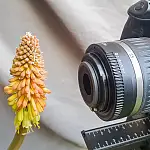Top 10 Pro Tips for Photographing Spectacular SkiesTake a look at some top tips for photographing spectacular skies. Learn everything you need to enjoy incredible views of the skies.
Create a Silhouette or Contrast to Highlight Spectacular Skies
The most vibrant colours can be seen around dawn and dusk. Before the colour reaches its height, locate a strong foreground. Shapes should be strong and simple. Look for features that are simple to identify, such as trees or the curved lines of a well-balanced rock. Avoid mixing convergent elements as the foreground should stand out due to the strength of its shape.

Look for Reflections As Well As Spectacular Skies
You can take some of the best sky photos without ever raising your camera skyward. Almost any reflective surface can reflect what is in the sky. Look for unexpected contrasts by observing reflections on glass, ice, and water.

For abstract compositions, a telephoto lens can be used to separate parts of the earth and sky. To maintain the depth of field and heighten the surrealistic atmosphere, stop down your lens to a small aperture. Images' out-of-focus areas are used by viewers to judge what objects are nearby and far away from the camera.
Balance Contrasty Skies
A graded neutral density (ND) filter is one of the most valuable filters you can own, second only to the polarizer. In essence, a graduated ND filter is composed of equal parts clear and darkened grey glass with a gradation in the middle. The filter's dark grey portion restricts how much light can pass through it.

In certain scenes, the complete range of contrast cannot be captured by film or a digital camera. This is crucial since the sky is frequently much brighter than the ground. Without this filter, you can either overexpose for the foreground and lose detail in the background, or underexpose for the background and wash away the sky. The exposure values are brought closer to those of the land by placing the darkened portion in the filter on the bright sky.
Embrace Stormy Weather for Spectacular Skies
Photographers frequently claim that bad weather is favourable. It's favourable when bad weather starts or ends. Without the sun's illumination of certain landscape features, your photographs would appear flat and lifeless. Rainbows and the majority of other weather phenomena require sunlight to be visible. Waiting until the sun breaks through the darkness and illuminates the landscape is the trick. Those majestic skies look even more impressive when there is some sunlight. The shadows should, however, be left to fall where they may, and you should make sure that you are exposing for the highlights.

Include the Sun and Moon
A massive telephoto lens is not necessary to capture stunning images of the sun and moon. No matter how big or tiny they are depicted on film, both have had such profound mythological and practical effects on humanity that we are drawn to them. Knowing when and where they will be in the best position to be photographed is the difficult part.

For this very aim, the Internet offers a wealth of resources. For information on sunrise/sunset and moonrise/moonset times, visit the US Naval Observatory . You may access rising and setting information for any day of the year by simply typing in your location. Visit StarDate Online for a printable calendar to keep track of the moon's phases.
Aim for the Stars
After sunset, don't put the camera away. Clear nights with no clouds can present good potential. A tripod, a cable release, and a camera with a long exposure feature are required. While the sky is still light enough for you to see, set up the camera. A little foreground is helpful for perspective; then, wait until the stars appear.
With a long exposure, the stars will appear as arcs of light when captured by the camera as the earth spins.

Capture the Skyscape with Spectacular Skies
Sometimes the best subject for a shot is the sky itself. A cumulus cloud procession can create pleasing abstract patterns. Include the moon or the rising sun, and your image has a strong focal point.

To get fascinating images, you need to be comfortable with your equipment. When you're trying to get a shot of the moon cresting a cloud, it can move remarkably quickly. This is hardly the time to be experimenting with your brand-new 300mm lens.
Show A Little Blue Sky
You've travelled far to reach this amazing place, yet despite the favourable weather forecasts, the sky hovers over the earth like a featureless sheet. Blue-sky days may be ideal for playing sports and lounging in the sun, but they rarely result in striking landscape photographs. What are your options for saving your shots? minimise the amount of sky displayed. In your compositions, limit it to no more than a third of the upper frame. By focusing on eye-catching forms, leading lines, and patterns, the foreground can be made more prominent.

Looking for warm colours in the foreground to contrast with the dark sky is another approach to saving an image. The strongest contrast with blue will be seen with orange in particular. Where these two colours converge in your images, they will positively vibrate.
Be Prepared for Spectacular Skies
This is not limited to Boy Scouts. Why attempt to create magnificent sky shots without first studying something about meteorology? You wouldn't invest the time and money to travel to a national park to capture deer or wolves without first learning about their behaviour. To learn more about how significant weather systems affect the local sky conditions, pick up a weather field guide.
You'll learn what meteorological conditions are most likely to result in whispy cirrus clouds or towering thunderheads. To comprehend comprehensive weather forecasts, you don't need a meteorology merit badge. Before you even set out for the destination, learn enough to give you a good notion of the type of sky to anticipate.










